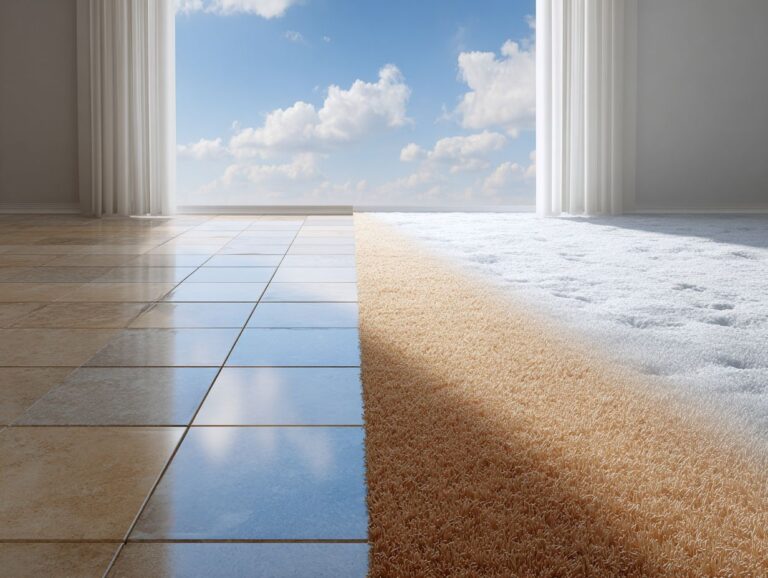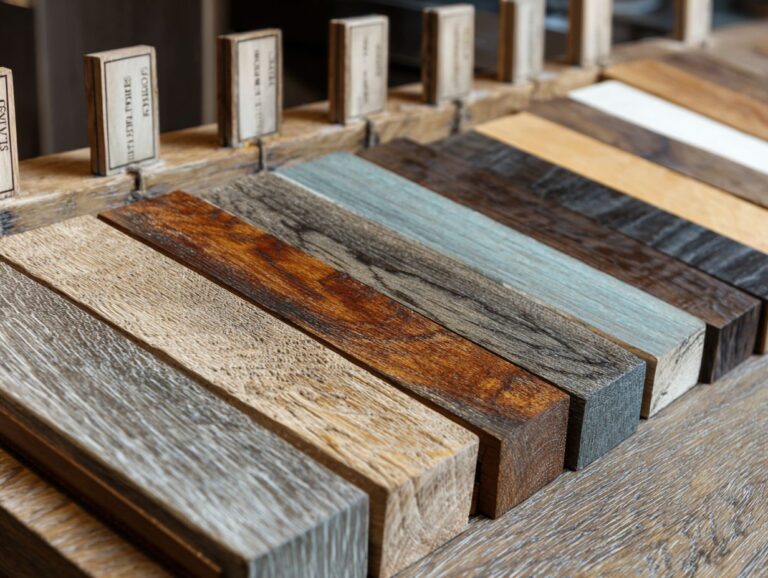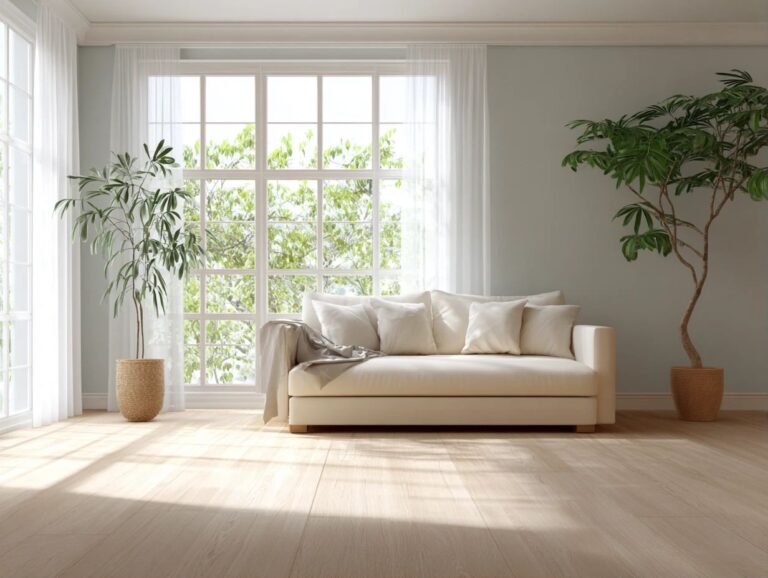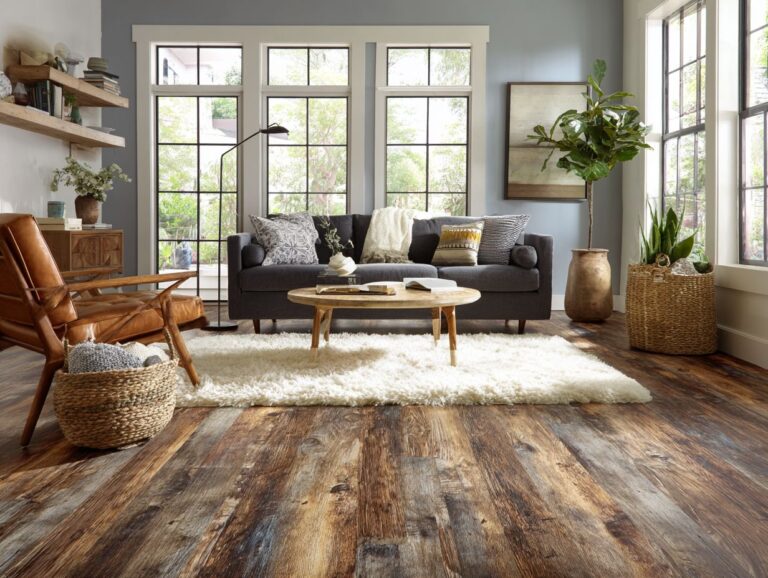Prefinished vs Unfinished Hardwood – Making the Right Choice
Picking between prefinished and unfinished hardwood can be confusing, but knowing what each option offers is important for a beautiful home. With brands like Bruce and stores such as America’s Floor Source, you can look at different hardwood flooring choices that fit what you need. This article will clarify the differences, from the convenience of factory-applied finishes to the installation process of unfinished hardwood, helping you make an informed decision for your space.
Key Takeaways:
Contents
Definition of Hardwood Flooring
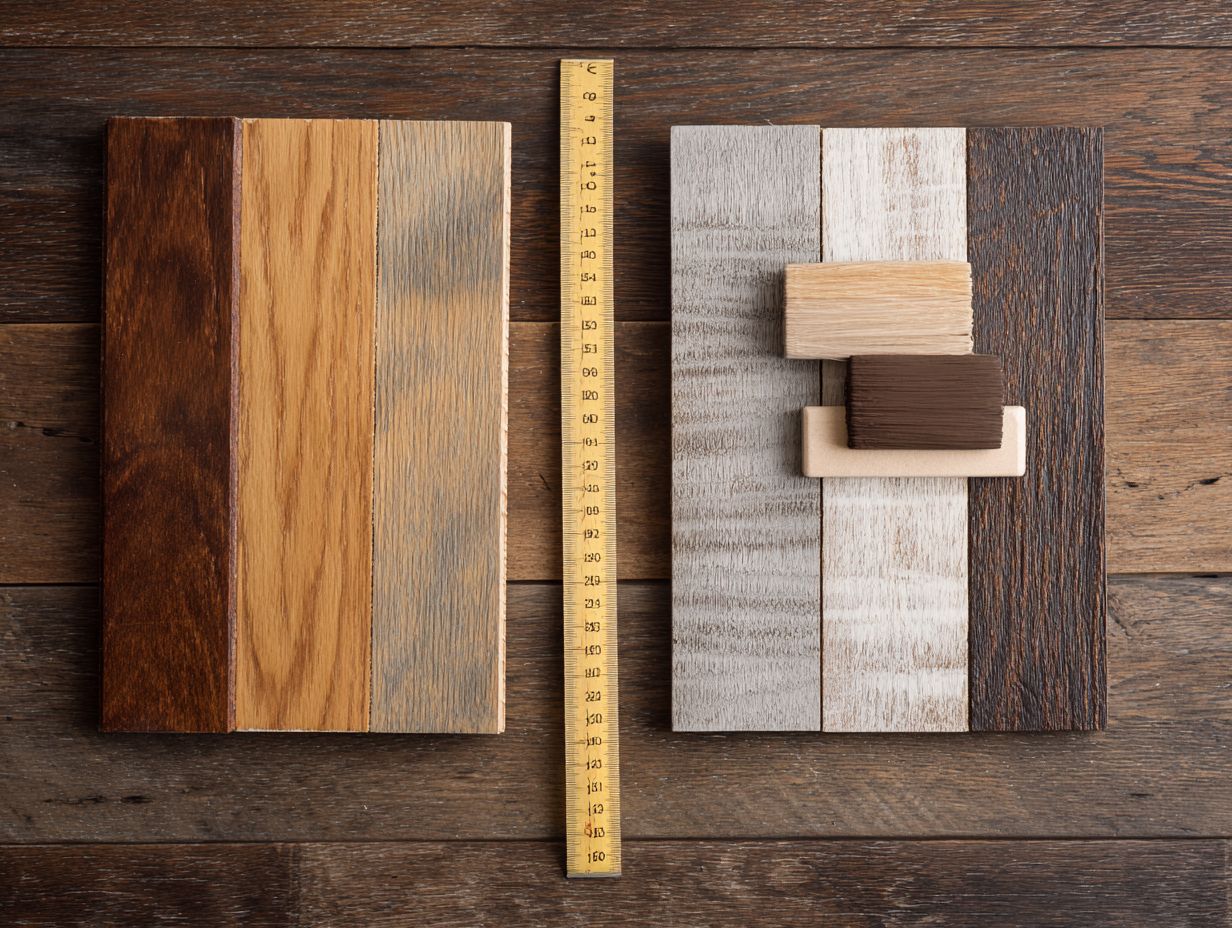
Hardwood flooring is made from solid wood species like oak, maple, and hickory, offering various styles and finishes for any design preference.
Each wood species has unique characteristics; for instance, oak is known for its durability and prominent grain patterns, while maple offers a more subtle appearance and is slightly harder.
Selecting the right finish is important-matte finishes show natural wood patterns but may need more upkeep, while glossy finishes are easier to clean but can show scratches more easily. Worth exploring: Hardwood Flooring Finishes – Polyurethane vs Oil vs Wax
For those considering installation, tools like a miter saw for cutting and a flooring nailer for secure placement are essential. Knowing these factors can greatly affect both appearance and durability.
Importance of Choosing the Right Type
Choosing the right hardwood flooring is important because it affects the appearance, durability, and upkeep of your floors.
For high-traffic areas, consider hardwoods like oak or maple, known for their durability and resistance to wear. Oak is a timeless choice, offering a range of stains, while maple provides a lighter finish, adding a modern touch.
When selecting, also think about your personal aesthetic; a rustic home might benefit from distressed hickory, whereas a contemporary space could shine with sleek walnut.
Applying coatings like polyurethane can make floors last longer, keeping them looking nice even with regular use.
Understanding Prefinished Hardwood
Prefinished hardwood comes with a finish applied at the factory, offering an easy-to-install option that many homeowners like.
What is Prefinished Hardwood?
Prefinished hardwood is flooring that has been sanded and finished before installation, ensuring a seamless appearance once installed.
This manufacturing process usually includes a few steps:
- Choosing good wood
- Drying it in a kiln
- Putting on multiple layers of finish in a controlled environment
Common finishes include aluminum oxide, which is durable and resistant to scratches, and urethane, offering a more traditional appearance.
In contrast to site-applied finishes, which are applied after installation, prefinished options provide a more convenient solution with less mess and faster installation times.
This means homeowners can enjoy their new floors sooner, without the waiting period necessary for curing site-applied finishes.
Advantages of Prefinished Hardwood
One of the main advantages of prefinished hardwood is the reduced installation time, which can be completed in fewer than 12 hours compared to traditional methods.
This expedited installation is largely due to the absence of on-site finishing processes, allowing homeowners to enjoy their new floors almost immediately.
Prefinished hardwood generally emits fewer volatile organic compounds (VOCs) since the finishes are applied in a controlled environment, improving indoor air quality.
Another major advantage is stronger durability; factory finishes are usually tougher than those added later, offering better defense against scratches and wear.
These features contribute to a more efficient and healthier flooring solution.
Disadvantages of Prefinished Hardwood
Despite its advantages, prefinished hardwood may not be suitable for all environments, especially where custom finishing is desired.
In busy places, prefinished surfaces can lose their shine unevenly, creating noticeable differences in appearance. Unlike standard options, custom finishing lets you repair and refinish to fit the changing look of a home.
Homeowners might consider using Bona Traffic HD, a durable finish perfect for busy spaces, or a more matte finish for a rustic look with products like Varathane. To make the right choice, think about how the area will be used and what the design should accomplish.
Understanding Unfinished Hardwood
Unfinished hardwood lets homeowners select the final look of their floor by choosing the finish and stain colors after installation.
What is Unfinished Hardwood?
Unfinished hardwood is raw wood flooring that needs to be sanded and finished on-site, giving you a customized look that matches your design preferences.
To prepare for installation, gather essential tools such as a drum sander, sandpaper (ranging from 36 to 120 grit), a dust collection system, and finishing products like polyurethane.
Begin by ensuring the subfloor is clean and dry. Sand the boards to achieve a smooth surface, starting with coarser grit and progressing to finer grits.
After sanding, vacuum the dust and apply your chosen finish, which can be oil-based or water-based, depending on your desired look and durability needs. This process makes the wood look better and helps it last longer.
Advantages of Unfinished Hardwood
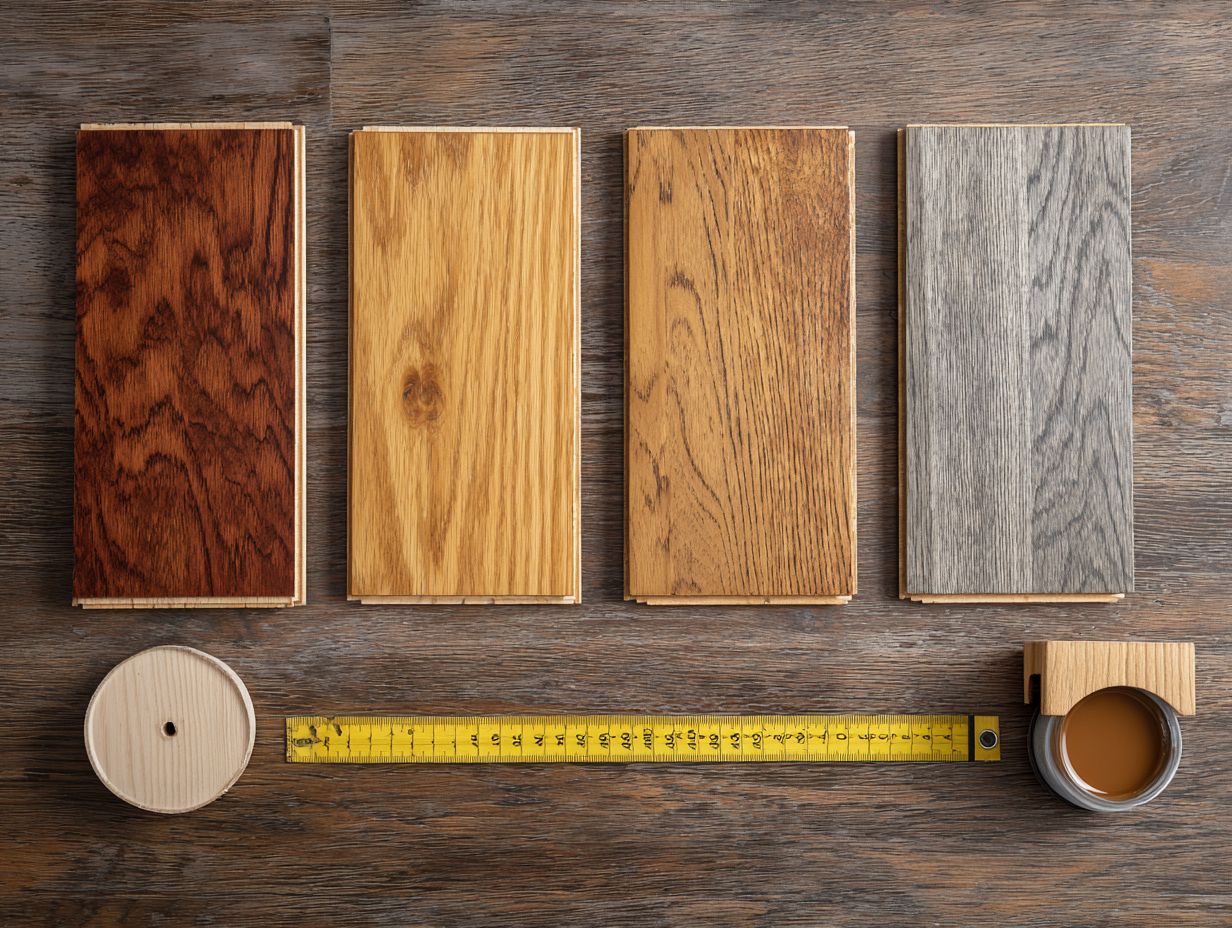
The main benefit of unfinished hardwood is that you can choose the finish, allowing for special appearances that can improve any area.
Homeowners can choose from a variety of stain colors and finishes to match their decor. For example, a light oak can be stained to achieve a rich walnut hue, while still preserving the wood’s natural beauty.
Unfinished hardwood allows for fewer visible seams, as the entire floor can be sanded and finished in one go. This improves the look and allows the floor to be redone later, keeping it looking good for a long time.
Disadvantages of Unfinished Hardwood
Unfinished hardwood can come with higher installation costs and longer timelines due to the need for on-site finishing.
This process has some difficulties, like the complex installation, because it needs experienced workers to sand and finish the floors smoothly.
The need for finishing can expose homeowners to volatile organic compounds (VOCs) during the drying process, which can impact indoor air quality. Labor costs typically increase by about 20-30% as professionals spend extra time preparing the wood.
To solve these problems, pick finishes with low VOCs and hire experienced workers to ensure the end result is safe and high-quality.
Comparison of Prefinished and Unfinished Hardwood
Looking at prefinished and unfinished hardwood shows important differences that can greatly affect your choice of flooring.
Hardwood Flooring Market Data
Hardwood Flooring Market Data
Market Growth and Projections: Global Market Value
The Hardwood Flooring Market Data provides a detailed examination of the industry’s growth, projections, and regional market shares from 2019 through 2033. This data shows trends in the market and how different regions behave, helping stakeholders see possible opportunities and challenges.
Market Growth and Projections indicate a significant increase in global market value from $33,379.5 million in 2019 to a projected $41,682.2 million by 2027. This growth reflects a CAGR of 3.6%, highlighting steady expansion during this period. The market value is predicted to rise to $51,380.0 million in 2024 and further expand to $69,780.0 million by 2033, with a slightly lower CAGR of 3.42% from 2025 to 2033. The data indicates a strong demand due to more building projects and people wanting long-lasting, high-quality flooring materials.
Regional Market Shares show important details about geographical trends The Asia Pacific region held a 58.79% market share in 2019, indicating its dominance due to rapid urbanization and infrastructure development. By 2024, North America will hold a 36.5% market share, with the U.S. contributing 87.5% of this share. This substantial U.S. presence in North America highlights the region’s demand driven by renovation activities and the trend towards sustainable, eco-friendly products.
The data shows that the hardwood flooring market can grow in various areas. As urbanization continues and consumer preferences evolve, the demand for durable and aesthetically pleasing flooring solutions supports steady market expansion. Market participants should prioritize new ideas and eco-friendly practices to take advantage of growth chances and stay ahead in this changing industry.
Installation Process
The installation process for prefinished hardwood can typically be completed in less than a day, while unfinished hardwood may take 2-3 days due to finishing requirements.
Prefinished hardwood is ready to install immediately, minimizing overall project time. You simply need to acclimate the planks for a few hours and then lay them down using a nail-down or glue-down method.
In contrast, unfinished hardwood requires sanding, staining, and sealing after installation, which introduces time constraints and complexity. Therefore, if you’re looking for a quick, hassle-free solution, opt for prefinished options like Bruce or Mohawk.
If desired, you can achieve a custom finish with unfinished hardwood, but be prepared for the additional time and labor involved.
Cost Considerations
Cost can be a significant factor, with prefinished hardwood generally averaging $3-$8 per square foot, while unfinished hardwood ranges from $2-$7 per square foot plus finishing costs.
Beyond initial pricing, consider labor costs, which can add $2-$6 per square foot for installation, depending on the complexity.
Prefinished hardwood saves time because it doesn’t require any additional finishing, speeding up the installation process. Unfinished hardwood lets you change the look to your liking but requires additional work for sanding and sealing.
Long-term maintenance should also be factored in-annual refinishing might be needed for higher-traffic areas, costing approximately $1.25-$2 per square foot. Considering these factors helps create an accurate budget.
Durability and Maintenance
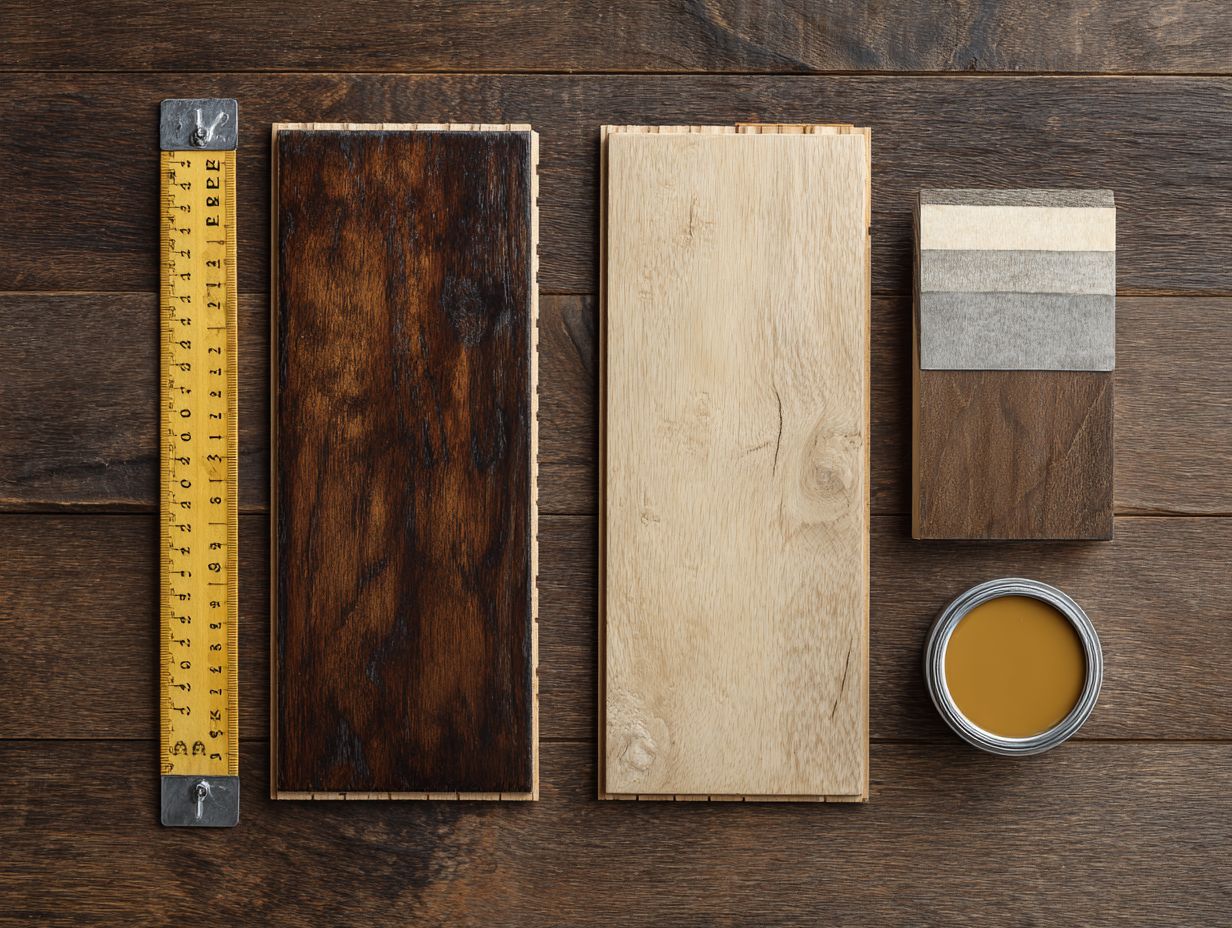
Both prefinished and unfinished hardwood offer durability, but prefinished options often require less maintenance due to their sealed surfaces.
Prefinished hardwood is factory-treated, meaning it arrives ready for installation and can resist wear from foot traffic better than unfinished varieties.
For instance, prefinished oak hardwood typically features a polyurethane finish that successfully guards against scratches and moisture.
On the other hand, unfinished hardwood requires sanding and sealing after installation, which can lengthen the process and add maintenance tasks over time.
To keep prefinished floors looking good, regularly sweep them and sometimes clean with a product recommended by the manufacturer. This makes them a good choice for areas where people walk a lot.
Customization Options
Customization options vary greatly between prefinished and unfinished hardwood, with unfinished wood offering nearly limitless possibilities for stain colors and finishes.
Homeowners can select stains for unfinished hardwood, like dark mahogany or lighter oak, to create a custom appearance that fits their home style.
Aside from stains, you can experiment with oil or polyurethane finishes for varying levels of sheen. Products such as Minwax or Varathane offer great options for home use that make surfaces last longer.
When opting for unfinished wood, consider the installation method-nailing or gluing can impact the final aesthetic as well as the long-term stability of the flooring.
Environmental Impact
Checking how hardwood flooring impacts the environment is important, particularly regarding its environmental friendliness and the release of volatile organic compounds. For those interested in environmentally friendly options, exploring reclaimed wood flooring can offer a sustainable alternative, as it involves sourcing materials that reduce the demand for new timber.
Sustainability of Prefinished vs Unfinished
When considering sustainability, unfinished hardwood allows for a more eco-friendly finishing process compared to factory-applied finishes that may contain chemicals.
Unfinished hardwood can be finished using natural oils or water-based products, minimizing the carbon footprint. For example, using tung oil or linseed oil can make wood look nicer and these oils contain few chemicals.
In contrast, factory-applied finishes often use volatile organic compounds (VOCs), which contribute to air pollution. Getting raw hardwood from forests that are managed well means the wood is taken in a way that protects the environment, unlike large-scale factory finishes where the source might not be clear.
Choosing unfinished hardwood helps make the air inside healthier and benefits the environment.
Volatile Organic Compounds (VOCs) Emission
VOCs are a significant concern, as prefinished hardwood can emit harmful chemicals while unfinished hardwood may have lower emissions post-finishing.
Choosing low-VOC products is essential for healthier indoor air quality.
For prefinished hardwood, check for certifications like Greenguard or FloorScore. These confirm that emissions meet strict safety requirements. Brands like Bruce or Shaw offer options that comply with these certifications.
Meanwhile, if opting for unfinished hardwood, consider local eco-friendly finishing products that use natural oils or water-based finishes to minimize VOC release. Each of these choices plays a critical role in maintaining a safe and comfortable living environment, particularly for sensitive populations.
Choosing the Right Option for Your Home
Choosing the right hardwood flooring is an important choice that needs thoughtful attention to what you like and what is practical.
Factors to Consider
Key factors such as installation time, maintenance needs, and traffic levels should guide your flooring selection process.
For example, prefinished hardwood usually takes less time to install because it can be used right away, which is perfect for households with a lot of activity. Conversely, unfinished hardwood allows for customization and finishing on-site but demands more time and labor upfront.
Maintenance differs too; prefinished options are often easier to clean and resist scratches better, while unfinished woods may need more frequent refinishing in high-traffic areas.
Consider your lifestyle and the specific demands of your home to determine the best choice for your flooring project.
Personal Taste and Aesthetics
Personal taste plays a significant role in flooring decisions, with options varying widely in grain patterns, color matching, and finish quality.
For instance, a rustic farmhouse aesthetic pairs well with textured oak floors featuring a matte finish, enhancing warmth and charm.
In contrast, a modern minimalist design can benefit from sleek, dark walnut with a glossy finish, creating a striking impact.
Think about popular styles such as hand-scraped wood, which gives a unique appearance, or smooth, modern finishes for a polished look.
When choosing, it’s essential to sample wood swatches in natural light to see how they blend with your existing decor, ensuring a harmonious integration.
Long-term Investment
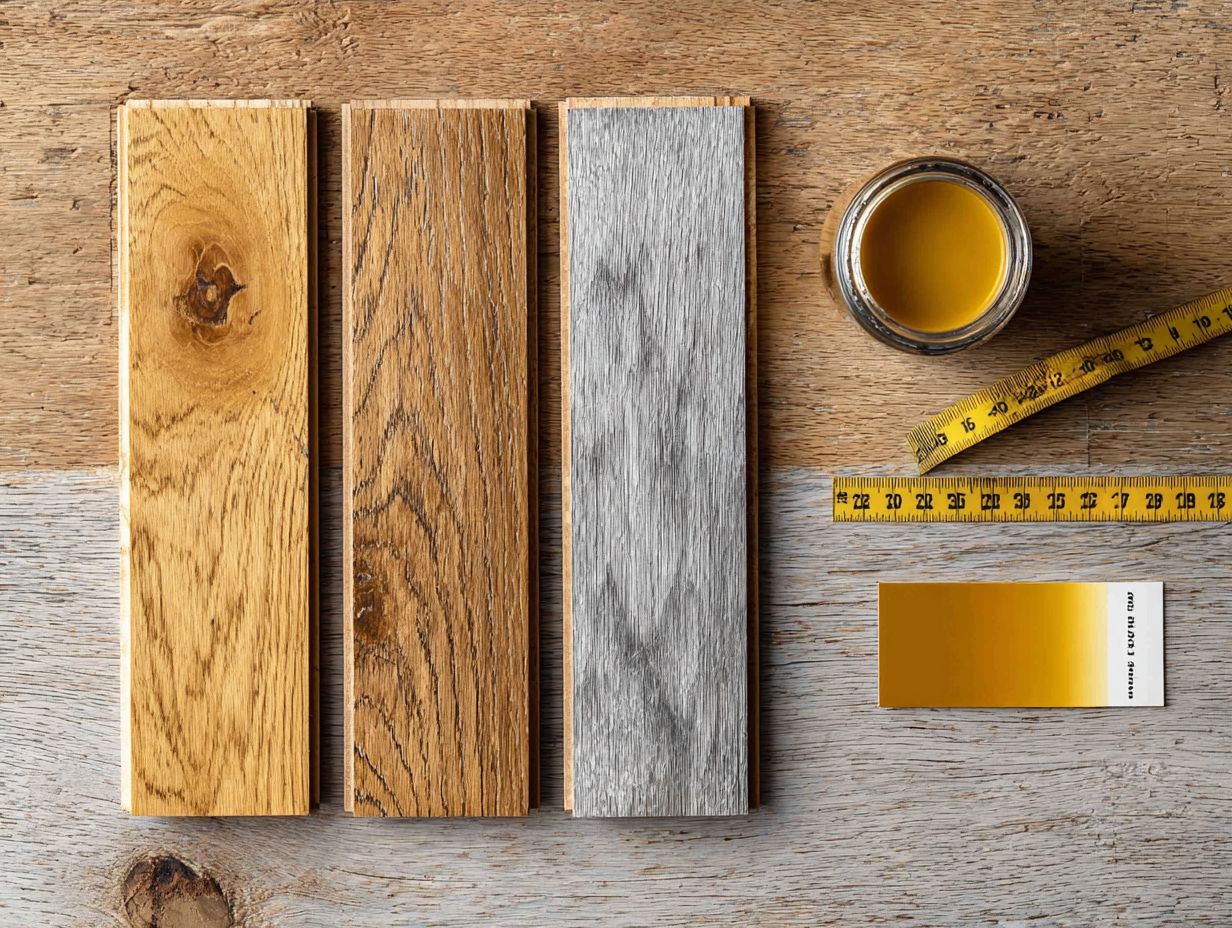
Hardwood flooring is often considered a long-term investment, with both options providing durable surfaces that can last decades when properly maintained.
Think about a few important factors before you decide.
- First, assess the warranty-most manufacturers offer 25 years for finished hardwood, while unfinished may have shorter coverage.
- Second, consider resale value; homes with hardwood often sell for 2.5% to 10% more.
- Think about maintenance costs-cleaning and refinishing every 5-10 years might raise your expenses, but maintaining the floors will make them look good for a long time.
Looking at these elements helps you make a good choice that maximizes your return.
Final Thoughts on Prefinished vs Unfinished Hardwood
In the end, deciding between prefinished and unfinished hardwood comes down to personal preferences, such as look, upkeep, and cost.
Prefinished hardwood offers a convenient installation process with a factory-applied finish that protects against wear and scratches. This option typically requires no additional drying time and is ready for immediate use.
Conversely, unfinished hardwood allows for a completely customizable look, enabling homeowners to choose the stain and finish that best matches their decor. This choice demands more time and effort, as it requires sanding and finishing on-site.
Consider your lifestyle: if quick installation is paramount, prefinished wood is ideal; if customization matters most, opt for unfinished.
Frequently Asked Questions
What is the difference between prefinished and unfinished hardwood?
Prefinished hardwood is already sanded, stained, and sealed by the manufacturer before installation, while unfinished hardwood is installed as raw wood and finished on-site.
Which option is more cost-effective?
Prefinished hardwood is generally more expensive upfront due to the labor and materials involved in the manufacturing process, but it can save money in the long run since there is no need for additional finishing costs.
What are the pros of prefinished hardwood?
Prefinished hardwood offers consistent color and finish, easier and faster installation, and less mess and odor during the process. It also comes with a factory-applied warranty.
What are the advantages of unfinished hardwood?
Unfinished hardwood allows for more customization in terms of finishing and staining options. It also allows for a seamless look if new flooring is added to existing hardwood.
Are there any downsides to prefinished hardwood?
Prefinished hardwood may have visible edges and seams, and it is more difficult to repair or replace damaged planks. The color and finish may also not be exactly what a homeowner desires.
What are the downsides of unfinished hardwood?
Unfinished hardwood requires more time and effort for installation, and there may be more mess and odor during the process. It also does not come with a warranty from the manufacturer.
